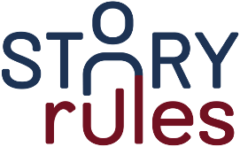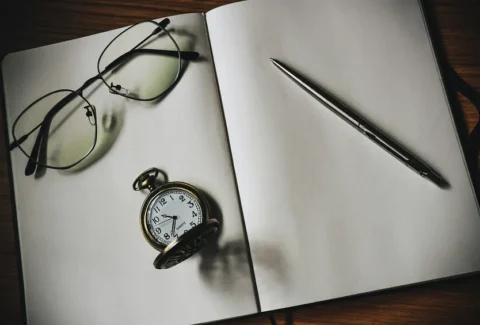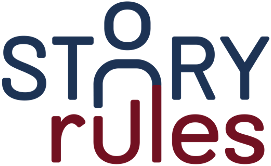Writing a book using Index Cards
Reminder! I’m doing a quiz on my book, ‘Story Rules’ for all those who have read it! It’s on 29-November from 11 am to 12 pm. I’ve got a sneak peek into the questions by quizmaster Sanat Pai Raikar, and they are super cool!
Click on the image below to register if you haven’t already done so!
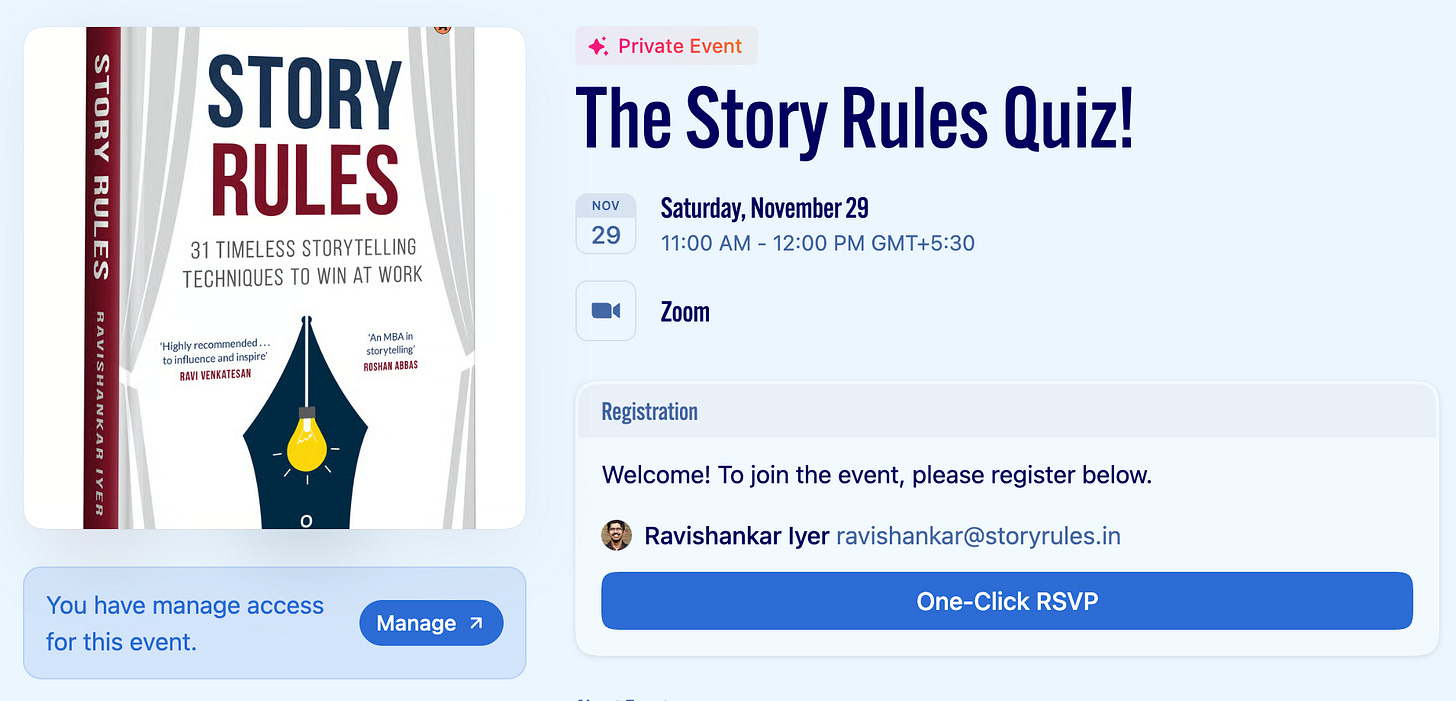
Also, I shared a short video of me reading an extract from the book, in a Mumbai launch event (that was for friends and family). It was fun!
Btw, after a LOOOONG time, I was at home this whole week (17-21). There were calls and online sessions, but no travel…
As if to compensate, next week involves 5 days of travel!
And now, on to the newsletter.
Thanks for reading The Story Rules Newsletter! Subscribe for free to receive new posts and support my work.
Welcome to the one hundred and forty-third edition of ‘3-2-1 by Story Rules‘.
A newsletter recommending good examples of storytelling across:
- 3 tweets
- 2 articles, and
- 1 long-form content piece
Let’s dive in.
𝕏 3 Tweets of the week

Fascinating chart (though it is PPP!) We are reaching an interesting inflexion point in world history.
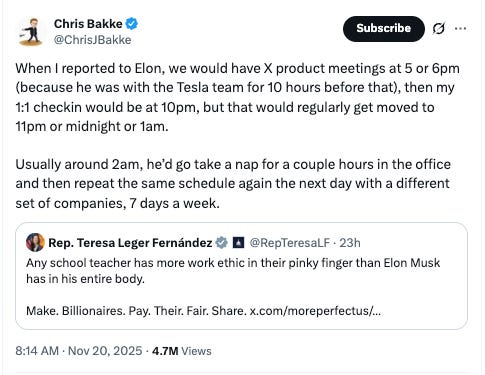
Love him or hate him, you gotta admire Elon’s work ethic!

Superb framing of how lucky we are!
📄 2 Articles of the week
a. ‘Bihar election results: Twelve Ds that explain the Bihar results’ by Roshan Kishore
Some smart analysis and insights from Kishore in this article on the recent NDA win in the Bihar state election. He also uses alliteration to frame the points under twelve Ds. For example:
Déjà vu wins over Dogma
The alliance of Nitish Kumar’s Janata Dal (United) and Bharatiya Janata Party (BJP) has never lost an election they have contested together – they did part ways in the 2014 Lok Sabha and 2015 assembly polls – since they won Bihar in October 2005. An uninterrupted, invincible run for twenty years in a state as large as Bihar is not a small feat. What explains this resilience of the JD(U)-BJP combine? The proverbial ‘coalition of extremes’ of lower Other Backward Classes (OBCs) and upper castes explains its electoral strength. This coalition emerged as a backlash to Lalu Yadav’s Muslim-Yadav or MY politics, which exploited the first-past-the-post system to win Bihar in the pre-2005 era. 2025 is another proof that Bihar is basically a contest between MY and the ‘coalition of extremes’, and the latter is far ahead.
Essential reading for those interested in Indian politics. Also, listen to this great companion podcast episode where Kishore has been interviewed by Milan Vaishnav.
b. ‘Money Talks. Now it Thinks’ by Eric Glyman (Ramp)
Check out this post on X by Glyman (cofounder, Ramp, a spend-management platform). This is page 1.
The article uses simple, clear writing and makes a strong memorable pitch: how money now thinks because of the Ramp platform.

For the whole article, check out the tweet.
🎧 1 long-form listen of the week
a. Award winning writer explains her whole process: Susan Orlean on the How I Write podcast
In another birth, I would love to do what Susan Orlean does. Pick up a topic, go deep into it and then take years to write a book about it.
In this conversation with David Perell, Orlean talks about her intensive writing process.
I loved how she physically works on her story elements through index cards!
Perell: The first thing that I wanted to ask you about was about stories and thinking through the structure of a story before you begin it. I want to hear how you work through that problem.
Orlean: In practical terms, I for many many years and now for the third or fourth book, I’ve used a system of index cards transferring all of my material or at least the material that I know is really kind of instrumental in what I’m writing onto these 5 by8 index cards. so that I really have all the material in front of me and that can be lots of cards. Um on the last two books of mine before this memoir um rent and the library book I had about 700 of these index cards. So you know I’m really breaking out the material into these digestible chunks. Then I take the cards and I move them around physically.
I loved this part, and I teach something similar in my workshops using the 1-3-9 principle. It’s about figuring out the right themes or categories in your story.
I also used it (for some chapters) while writing my book. The cover image for this post is of some cards I created for one of the chapters. 🙂
Orlean also mentions how the cards help her to find the right themes:
Orlean: I use those cards though to move around and begin seeing a structure. How is this going to what pieces of information fit with other pieces of information or what are the themes that I see coming through in the book? And it really is a matter of like literally picking up the cards and moving them physically. I think it’s a really important part of it for me to keep reacquainting myself with the information, keep sort of remembering, oh, this anecdote I, you know, this is important, this goes here… and refreshing my memory
Of course, the next step after organising the cards is to connect them with a narrative (and not just make it a dump of information):
Orlean: The nature of non-fiction writing, of course, is that you have to at least to begin with, be a good researcher, a good reporter, gathering interesting information. But the difference between me saying, “All right, now I’m just going to read you bullet points of information versus Let me tell you this amazing story. Sit back. I’m going to spin a mood. I’m going to engage you in the characters. I’m going to very importantly but subtly explain to you why this is a story that you really should listen to.” And those different elements subtly have to come together to lift a story out of just being an assemblage of information into being a story. a yarn, you know, a story where if you’re sitting across from me at dinner, you’re going to listen maybe for an hour as I tell you this incredible story about the biggest library fire in American history.
Especially in an age of low attention spans, we need to ensure we start well to intrigue the audience and get their attention:
Perell: How do you think about leads at the beginning? The importance of yanking someone in, hooking them in.
Orlean: The most important. The most important. Yeah, it’s always important, but in a universe of competition for people’s attention, there’s an argument to be made that all of us have lost some capacity to focus. Some like a like a sidewalk pigeon sometimes. Yeah. And that we’ve all gotten unfortunately very used to things quick change, bite of information, next bite of information. So, the very importance of a lead has never been greater. And that depending on the story you’re telling, in my case, I would say 90% of the time, I’m telling you a story that you don’t necessarily think you need to know. How can I get you to give me your attention? It’s all in that lead. It’s let me hook you in. Let me give you a little bit of information that’s going to be intriguing enough that you go, “Oh, wait a minute. What’s this about?”
Orlean uses a simple trick when editing her work—she reads it aloud:
Orlean: I would say my biggest trick was reading my work out loud and discovering that it’s an almost foolproof way to hear a sentence that doesn’t work, to hear something that’s repetition. to hear things that are not quite clicking. And it became something I did very very regularly is just read it out loud. Sometimes when you’re reading out loud and you get a little bored, that’s a sign that it’s maybe a little boring. So I began using that as my first line of editing…
Also, sleep over your first draft and edit it the next day:
Orlean: Other than that, it was just reading each sentence very closely, assessing if it worked rhythmically, if it worked logically, if it served a purpose. Um, and then you know after I write the next day before I continue I go back and read what I read wrote the day before and edit it pretty intensely
That’s all from this week’s edition.
Photo by Diana Polekhina on Unsplash
